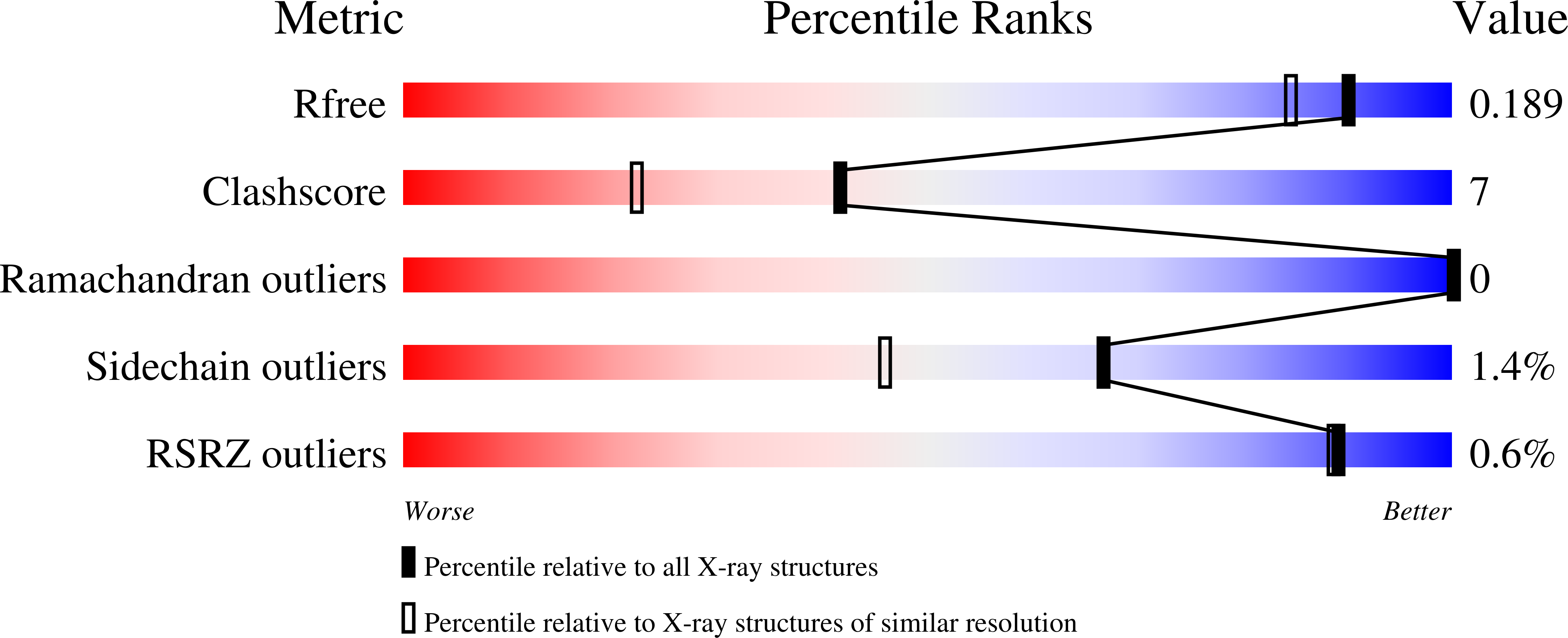Substrate Recognition by the Multifunctional Cytochrome P450 Mycg in Mycinamicin Hydroxylation and Epoxidation Reactions.
Li, S., Tietz, D.R., Rutaganira, F.U., Kells, P.M., Anzai, Y., Kato, F., Pochapsky, T.C., Sherman, D.H., Podust, L.M.(2012) J Biological Chem 287: 37880
- PubMed: 22952225
- DOI: https://doi.org/10.1074/jbc.M112.410340
- Primary Citation of Related Structures:
2Y46, 2Y5N, 2Y5Z, 2Y98, 2YCA, 2YGX, 3ZSN, 4AW3 - PubMed Abstract:
The majority of characterized cytochrome P450 enzymes in actinomycete secondary metabolic pathways are strictly substrate-, regio-, and stereo-specific. Examples of multifunctional biosynthetic cytochromes P450 with broader substrate and regio-specificity are growing in number and are of particular interest for biosynthetic and chemoenzymatic applications. MycG is among the first P450 monooxygenases characterized that catalyzes both hydroxylation and epoxidation reactions in the final biosynthetic steps, leading to oxidative tailoring of the 16-membered ring macrolide antibiotic mycinamicin II in the actinomycete Micromonospora griseorubida. The ordering of steps to complete the biosynthetic process involves a complex substrate recognition pattern by the enzyme and interplay between three tailoring modifications as follows: glycosylation, methylation, and oxidation. To understand the catalytic properties of MycG, we structurally characterized the ligand-free enzyme and its complexes with three native metabolites. These include substrates mycinamicin IV and V and their biosynthetic precursor mycinamicin III, which carries the monomethoxy sugar javose instead of the dimethoxylated sugar mycinose. The two methoxy groups of mycinose serve as sensors that mediate initial recognition to discriminate between closely related substrates in the post-polyketide oxidative tailoring of mycinamicin metabolites. Because x-ray structures alone did not explain the mechanisms of macrolide hydroxylation and epoxidation, paramagnetic NMR relaxation measurements were conducted. Molecular modeling based on these data indicates that in solution substrate may penetrate the active site sufficiently to place the abstracted hydrogen atom of mycinamicin IV within 6 ? of the heme iron and ~4 ? of the oxygen of iron-ligated water.
Organizational Affiliation:
Life Sciences Institute, University of Michigan, Ann Arbor, Michigan 48109, USA.


















